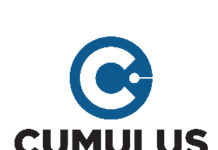
As Congress prepares to reconvene for fall, they’ll be addressing the AM For Every Vehicle Act. At the heart of the legislation is radio’s role as a safety feature, but as we’ve seen in the Maui wildfires and early start to hurricane season, sometimes radio remains forgotten by leaders and emergency responders. So what does it take to get radio’s benefits across?
Radio Ink discussed this issue with Steve Newberry, CEO of Quu, President of Commonwealth Broadcasting, and former NAB Joint Board Chairman and EVP for Industry Affairs and Strategic Planning.
Radio Ink: If there’s one thing to pick that radio has campaigned on this year, it would likely be the medium’s importance in an emergency. It’s the core tenet of the AM For Every Vehicle Act. But then came the Maui wildfires, and we saw public officials take 48 hours to use radio to reach those in harm’s way. We’ve all banged the gong so much about radio being key to public safety, why isn’t this getting through to authorities? How are they not getting it through their heads that radio is the place to go?
Steve Newberry: For years, I have used an example when I’m speaking to college students. I tell them there’s a new technology that’s been deployed. It’s free. It’s available everywhere in the United States. It has all kinds of different formats. It requires no internet connection. It’s totally autonomous and can reach basically every home in America immediately. They look at me with eyes of wonderment and when I say it’s radio, they… are almost surprised because they don’t think in terms of how ubiquitous radio is.
I think that may be the case with local or emergency officials. Emergency officials can get so focused on social media or alerts on phones that they forget the most dependable, reliable source of getting information to the community. You don’t think about your light switch until you don’t have power. You don’t think about your water faucet until you don’t have water. Many times people don’t think about the dependability of radio until their phone or internet is down.
There’s a constant effort to remind through publications like Radio Ink, the NAB, and the state broadcast associations, but I think it’s incumbent on everyone in radio to remind people about how dependable local over-the-air radio is.
Radio Ink: Is it a technology issue? Does radio need to lean more into new tech for emergencies that gives us a newer, shinier appearance?
Steve Newberry: Well, the most important thing for any radio station, I believe, is to get urgent information out immediately to the listener, not to wait till the end of a song or a commercial break.
With Quu, we give our stations the ability to post a weather warning message continuously on the product while they may have other programming going on. It can also be intermittent and increase in severity. There may be one level of activation for a watch or a much higher level for a warning, but it supports what’s on the air. The technology gives listeners the ability to immediately look and know what the threat is for them where they live.
That being said, we don’t need to overcomplicate. Let’s put ourselves in the situation of someone getting in their car with a sense of anxiety, fear, or panic for the safety of their family. If they get in their car, turn on the radio, and they can immediately get emergency information on their in-car screen and through a local broadcast that is so much more efficient. They don’t have to ask, “Am I on the right app? Do I have the right app on my phone? Is the cell network working?” All the different things that might go with the breakdown.
So yes, there are all kinds of new technologies that radio should utilize. We should be everywhere. We ought to be deploying on every form of technology that’s available for delivering our product. but sometimes the simplest, most dependable may be the most efficient and effective to save lives.
Radio Ink: The NAB has been pushing hard to lobby for and promote radio on a national level, but as the saying goes, all politics is local. What does local radio need to be in the forefront? It’s not always a disaster that gets national attention – it could be a tornado in a small town. How do local stations make themselves top of mind in an emergency?
Steve Newberry: Good best practices for any radio broadcaster are to have an ongoing line of communication with your elected officials, with your local police, fire agencies, and emergency services coordinators – just always being with them and in front of them. Invite them to the facility to be a part of your radio station when times are great so that when times turn terrible, there’s front-of-mind awareness of, “Hey, I’ve got the general manager’s phone number. I’m gonna call them at two o’clock in the morning on his cell phone and wake them up.”
You don’t want them saying, “Well, we’ll call the station tomorrow at eight because I don’t know if they’ve got an answering service or a machine or if anybody’s actually at the station in the overnight hours.” Having those relationships and making sure that those in positions of authority have a way to reach out, get in touch, and call. I hope every elected official in my hometown and all of my market areas has my cell phone number. They’re welcome to call me if that’s what they need because that’s the responsibility of a broadcaster.









This is an informative column. But unfortunately Steve’s insight is disconnected from the reality of most AM stations. For example, there is only one AM station in Maui that produces live local news. And that one station only offers that live local news in the morning!
Plus, in Maui many cars were burnt, and major roads closed. So there was no in-car AM Radio listening.
If Congress is going to mandate AM radios in cars, maybe they should also mandate that AM stations MUST offer live local news for at least 10 minutes every hour, and they MUST offer live local content at least 12 hours a day.
Because “mandating” AM Radio in cars, in and of itself, does not fix the horrible lack of compelling or live local content on AM. Right now AM is primarily a wasteland of syndicated right wing talk shows and commercial Christian pay-the-ministries infomercials.
Ever since Congress passed the Homeland Security Act 20 years ago, the role of radio is to provide access to local emergency officials. That’s all. So when an emergency happens, as it did in Maui, those radio stations are on the air and available for local emergency officials to either enact EAS or provide information that the stations can broadcast. The state has admitted their they did neither one of those things. So the responsibility is on local emergency officials, not radio news departments. As for programming mandates, the first amendment clearly states that congress shall make no law respecting freedom of the press. No law means no law. If a station wants to run right wing talk all day, that’s their right. The only obligation is to make the signal available if emergency officials need it.
Nobody did anything?? No action plan in place for emergency purposes?
Excellent article and commentary. Licensed broadcast services need more and improved receivers, not elimination of this outstanding service.
Agreed.
Government leaders sure don’t forget radio when it comes to mandating the purchase and operation of EAS equipment. And they don’t forget to fine you if you don’t obey. Yet I’ve never once heard that system used by a government official to come on with an important announcement, not even on 9/11. All planes are grounded. The president is being whisked away to safety. The nation is wondering what in the world is going on, and the expensive Emergency Alert System is….silent.